
It’s that time of the year again when the bustle and hullaballoo of Christmas has already started to fade into distant memory. The childlike excitement when opening the letter box has turned into something far less pleasant now that the colourful greetings cards, bearing tidings of comfort and joy, have been supplanted by grey bills and bank statements, harsh reminders of the all the spondoolicks that disappeared up the proverbial chimney over the holiday period.
The mild, miserably wet weather certainly hasn’t helped dispel the winter blues, walking in the thick mud is not exactly fun. Mountainous piles of damp, cold dog towels are building up in the corner by the front door, my car permanently smells like a wet wool carpet and I’ve long since given up trying to keep to keep my ‘best’ walking coat clean. It is now stiff with mud up to the hips (not being a lady blessed with long legs) and getting quite uncomfortable to walk in.

On a positive note, the weather has been decidedly sharper and meaner over the past few days. Pretty, fairytale frosty mornings freeze the muddy field opposite the house into an unforgiving plain of rock hard furrows. Dawns have brought strikingly beautiful sunrises, garish pinks, reds and corals colouring the dramatic cloud patterns streaked over the Suffolk sky.
When its gloomy and cold outside, a lovely way to spend an afternoon is in the warm kitchen, listening to the radio or whatever takes your fancy, mooching around with the delicious smell of marmalade emanating from the stove. I only ever make marmalade at this time of the year, the Seville oranges now available in the shops make the most wonderful preserve, their natural, stringent bitterness producing a fabulously flavoured marmalade. Don’t do what I have done on quite a few occasions which is have the mañana approach, only to to find the very short season has passed you by and you will have to wait another long year to spread some of the real macoy on your hot buttered toast in the morning.
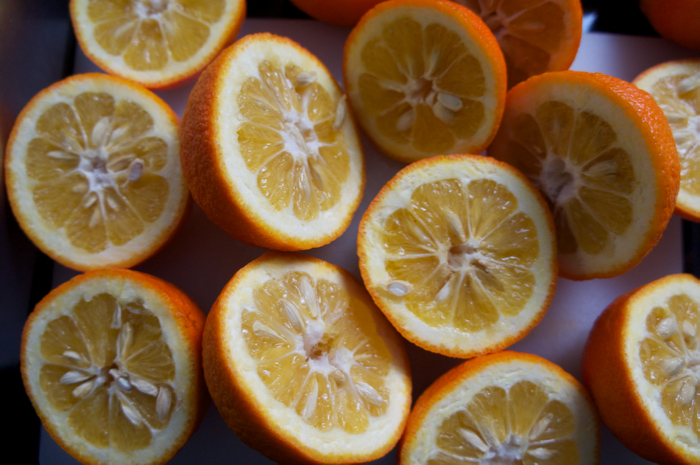

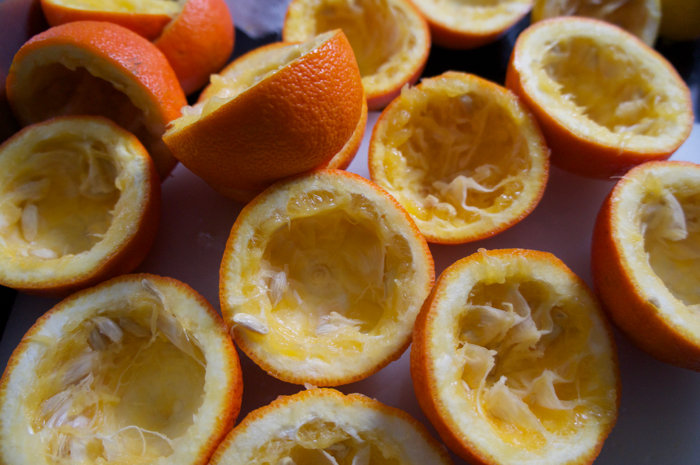
And for me, the real macoy it is. Having such a short season seems to make this knobbly skinned little citrus fruit even more special. Nothing like a ‘normal’ orange you would find in the fruit bowl, (you would certainly not want to eat one raw) Seville oranges are only grown in the Seville region in Andalucia, Spain. Even the name conjures up images of warmer days and certainly a huge bowl of the bright orange orbs helps bring some sunshine into the kitchen on even the darkest winter afternoon.
Unfortunately Seville oranges do not keep very fresh for long so use them as soon as you can after purchase. Some people freeze them for use later on in the year on when more convenient, although I tried this once and found the rest of my freezer contents took on an unpleasant orange tang which has put me off freezing them.
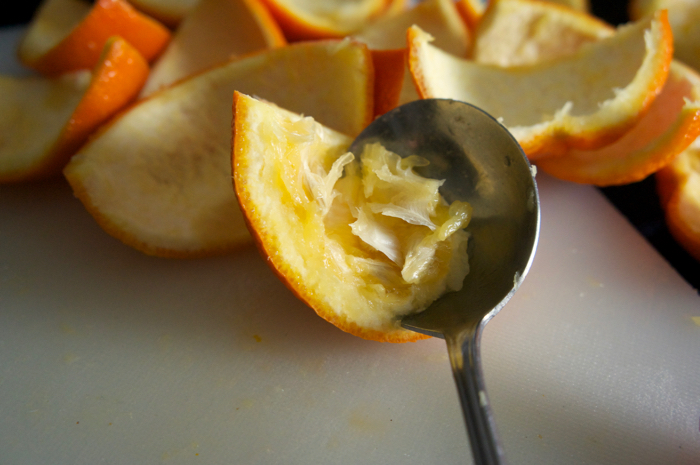
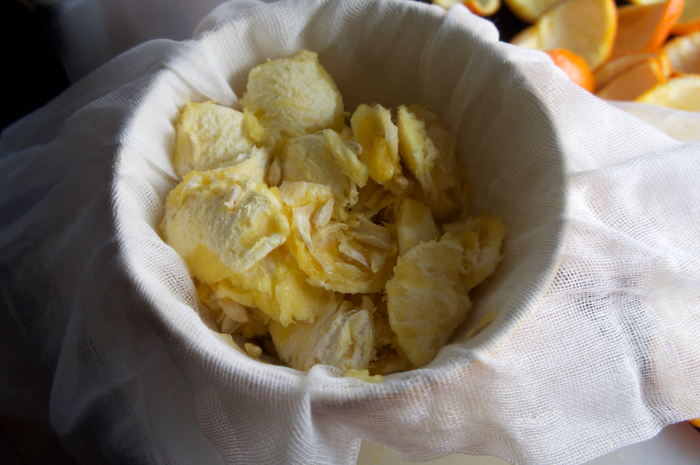

This year I made two batches on consecutive days to make sure I have enough for me (I am somewhat of a marmalade piggy) and as gifts for friends and pop- in guests. Today I swopped a jar with a friend for some kindling for the fire which made me feel very Ma Ingles.
For several years now I have used the same old Waitrose recipe card for Seville Marmalade, it always turns out beautifully although it does usually take a little longer than the suggested time of 15 mins to reach setting point. I have toyed with the idea of adding a dram of whisky or a few shreds of raw ginger to enhance the flavour but to be honest it is so lovely as is and so traditional, I feel any unnecessary additives would be bordering on sacrilege, like making a chicken tikka pizza.
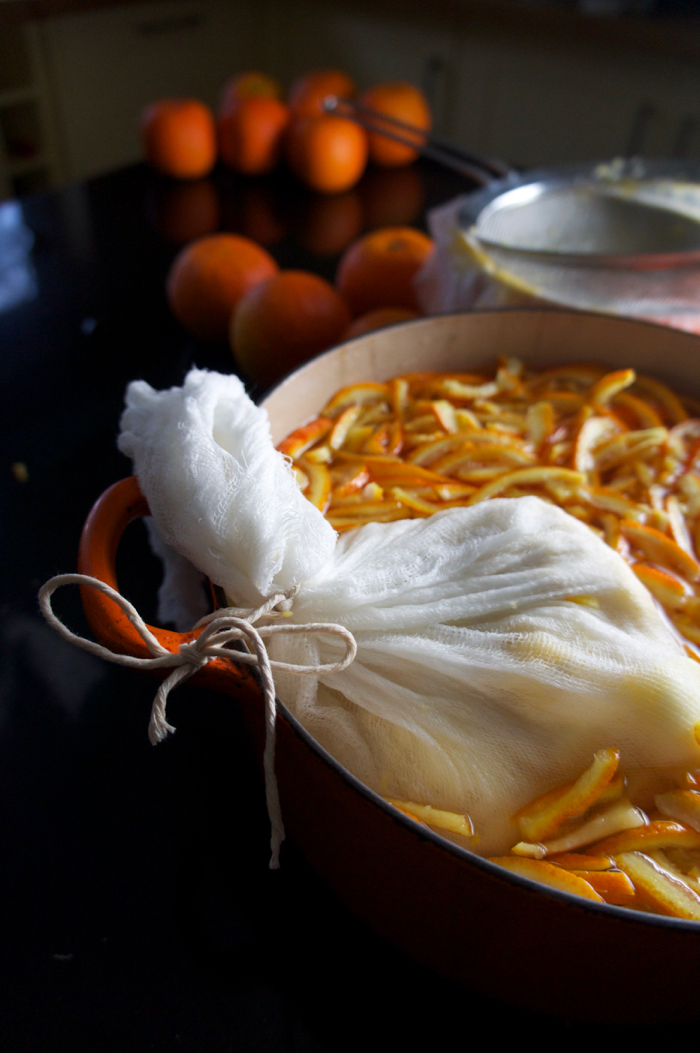
For the jars, I use either old jam jars or Kilner jars and this year I made use of some large preserve jars I brought back from our French holiday last year. I wash them in the dishwasher then lay them on their side on a clean tea towel laid on a baking tray. At the point I add the sugar to the marmalade I put the tray in the oven, turn it to 160c and when it has come to temperature put the timer on for 10 mins. Then turn the oven off and leave the jars in the oven until needed them. They should still be nice and warm then the marmalade is ready to pot.
The recipe may seem a faff but I find the whole process surprisingly therapeutic. Pick a day when you have oodles of free time and there is little chance of being easily distracted. Including the clearing up, the whole process does take up nearly the whole day and I’m still finding annoying little sticky marks in the kitchen. Don’t let that put you off though as it really is worth it the effort and you will never buy a jar from a shop again, there really is nothing that tastes quite like it.
As always let me know how you get on. Happy Cooking!
- 1kg Seville Oranges
- 1 Lemon
- 2kg Preserving Sugar (not jam sugar)
- If the oranges are waxed (usually not) give them a good wash and dry with some kitchen roll.
- Cut the lemon and oranges in half and juice, saving any pips. Discard the lemon rind.
- Strain the juice into a large maslin pan or very large saucepan. Add 2 litres of cold water.
- Cut the halves of oranges into halves again and use a metal spoon to scoop out the soft pith and remaining pips. Put the pith and pips into a large square of muslin (I find it easier if the muslin is placed in a bowl first (see picture) and tie securely with kitchen string to make a bag.Tie this to the side of the saucepan for ease of removal.
- Using a very sharp knife cut the remaining orange peel into strips, thin if you like fine shreds and thicker if you like your marmalade more on the chunky side. Place in the pan. Bring to the boil then simmer for 2 hours until the rind is soft and the liquid has reduced.
- Take out the muslin bag and carefully push out as much pectin as possible using the back of a wooden spoon. Be careful as it is very hot.
- Add the sugar and stir until dissolved, this does take a few minutes. Once there are no visible sugar crystals, turn up the heat so the marmalade reaches a rolling boil. Cook for about 15-20 minutes then put a spoonful on a cold saucer. Wait a few seconds then push the dollop with your finger – if it wrinkles up the marmalade has reached setting point. Cook for a little longer if required. Don’t worry if it not very wrinkly, it will still thicken up when cooled.
- Turn off the heat and let the marmalade settle for about 15 minutes. Remove any scum from the top then either using a ladle or jug fill the warm jars. Put a wax disc on the top then leave to cool before putting on the lid or cover.